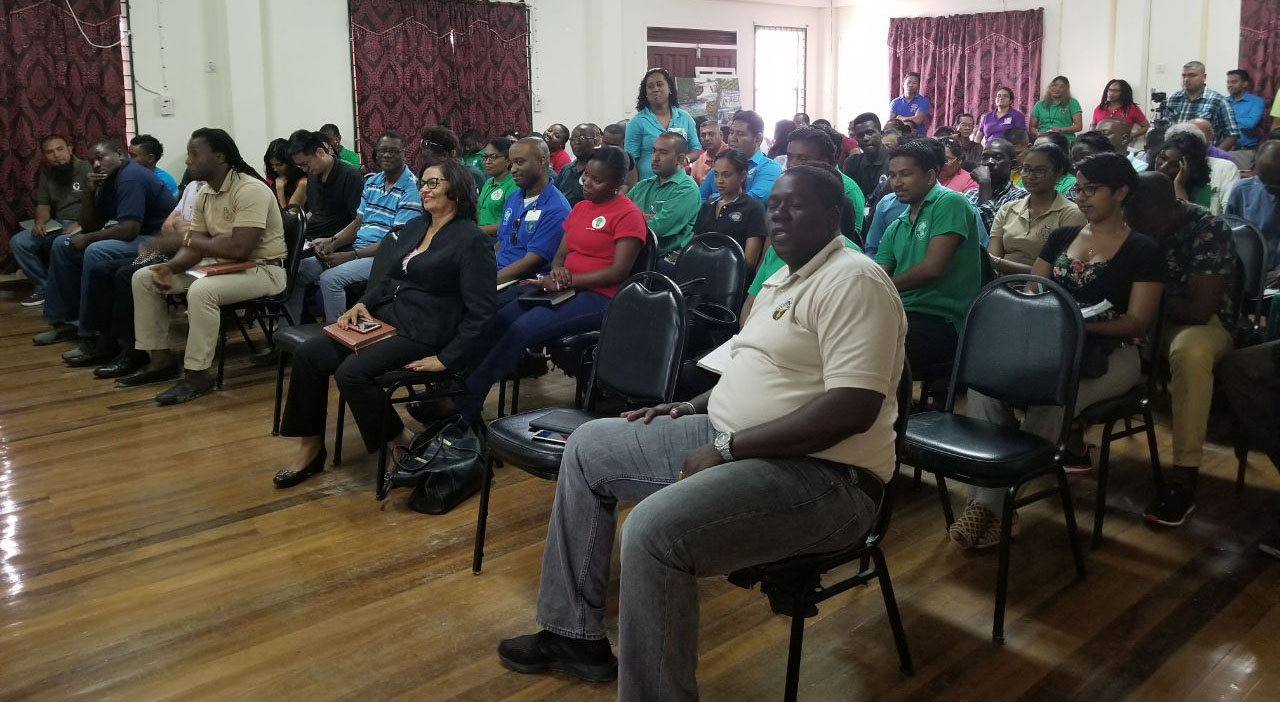The Guyana Forestry Commission (GFC) is inviting public feedback on the draft of the updated National Forest Policy and Forestry Plan, which Commissioner of Forests James Singh has described as a departure from the dated “forests-for-timber” approach.
The GFC yesterday presented the draft plan for feedback from the public, ahead of its submission to Cabinet.
The document is now available for viewing on the GFC’s website (http://www.forestry.gov.gy/), where members of the public can also submit comments for consideration. The deadline for those submissions is Friday, February 23rd.
Singh presented an outline of the document during a forum yesterday morning, at the Commission’s Multiplex in Kingston.
He explained that the revised policy differs tremendously from the previous forest policy document as it takes a more holistic approach to forestry management, abandoning the outdated forests-for-timber approach.
“It was recognised by policy makers and stakeholders that there was a need for updating the 2011 National Forest Policy and Plan. Factors which influenced this include the significant changes that occurred with relevance to the forestry sector, both locally and internationally. Another major factor was the launch of the Cooperative Republic of Guyana’s Green State Development Strategy framework. It was further noted that we must now increase our efforts to accurately value forests, simply beyond their timber potential,” he remarked during his presentation.
“The previous plan would have looked at the forests only from a forest-related, timber-harvesting specific context, so timber harvesting, non-timber forest products and so on. But this one recognszes that many other agencies have to be involved, not only forestry. So it’s a holistic thing and that is why the other ministries and the agencies, we’re now asking that they integrate relevant aspects into their work planning,” he further explained to this newspaper afterwards.
The policy is based on four objectives, which were identified as being for: (1) Deriving economic benefits from the forest; (2) Conserving, protecting and sustaining the forest; (3) Governing the forest; and (4) Building the capacity for effective forest management.
With a need for “integration at the national level” and the “streamlining of work plans across commissions and agencies,” Singh explained that the policy’s implementation will take an inter-agency approach, with key agencies having been identified as “lead actors” in the execution of specific activities, which are aimed at achieving the objectives. Singh noted that while organisations have been assigned to act in this role, they will be supported by other agencies “across sectors and institutional levels” in carrying out the mandate.
Asked what provisions have been made within the policy to reduce inter-agency conflicts where responsibilities overlap, Singh said that the policy does address land tenure conflicts, but noted that overcoming the issue will take some time. “Of course it will not be a process that is overnight. There will have to be discussions between the agencies. It will also have to entail a review of the legislation, a review of the policy frameworks—not only of forestry but of the other agencies,” he explained.
The policy document will be valid for 10 years but will be subject for a review in 2023.
Stumpage fees
Meanwhile, Singh also told the audience yesterday, which included loggers, that the GFC will restart its consultations for the proposed implementation of stumpage fees in order to educate loggers once again on its function, but he related that there will be no implementation of the fee this year.
“We had extensive consultations on this proposed stumpage value before for about two years. Additionally, the forest law requires for new charges to be instituted, but as usual, the Forestry Commission does it through a very consultative and participatory process…I think the initial position of the GFC was to charge about $8 …per standing tree and based on the consultations, we actually reduced it to $5,” the Commissioner said.
He opined that the fee is a “fair charge” given that while a sizeable portion of lands are issued out, some are used beneficially and others are not.
“…The forests of Guyana are not the property of the loggers; they are the patrimony of Guyana, and monies must be earned from these forest resources to fit into the social programmes of the government, etc. so we have a responsibility to ensure that whatever forests we give out, we receive a fair share of the earnings, the profits, to feed it back into the consolidated fund…,” Singh stated.
The question of the fee’s implementation was raised by an audience member, who said he felt “betrayed” as a logger after hearing mention of the fee.
“…Through all the consultations, all over this country, all the loggers were assured that stumpage value would not be passed….how come stumpage value can be used in Guyana when they’re not afforded proper roads? Our costs for production is very high… how can we as a logger afford it when we’re barely just surviving?” the man had questioned.









